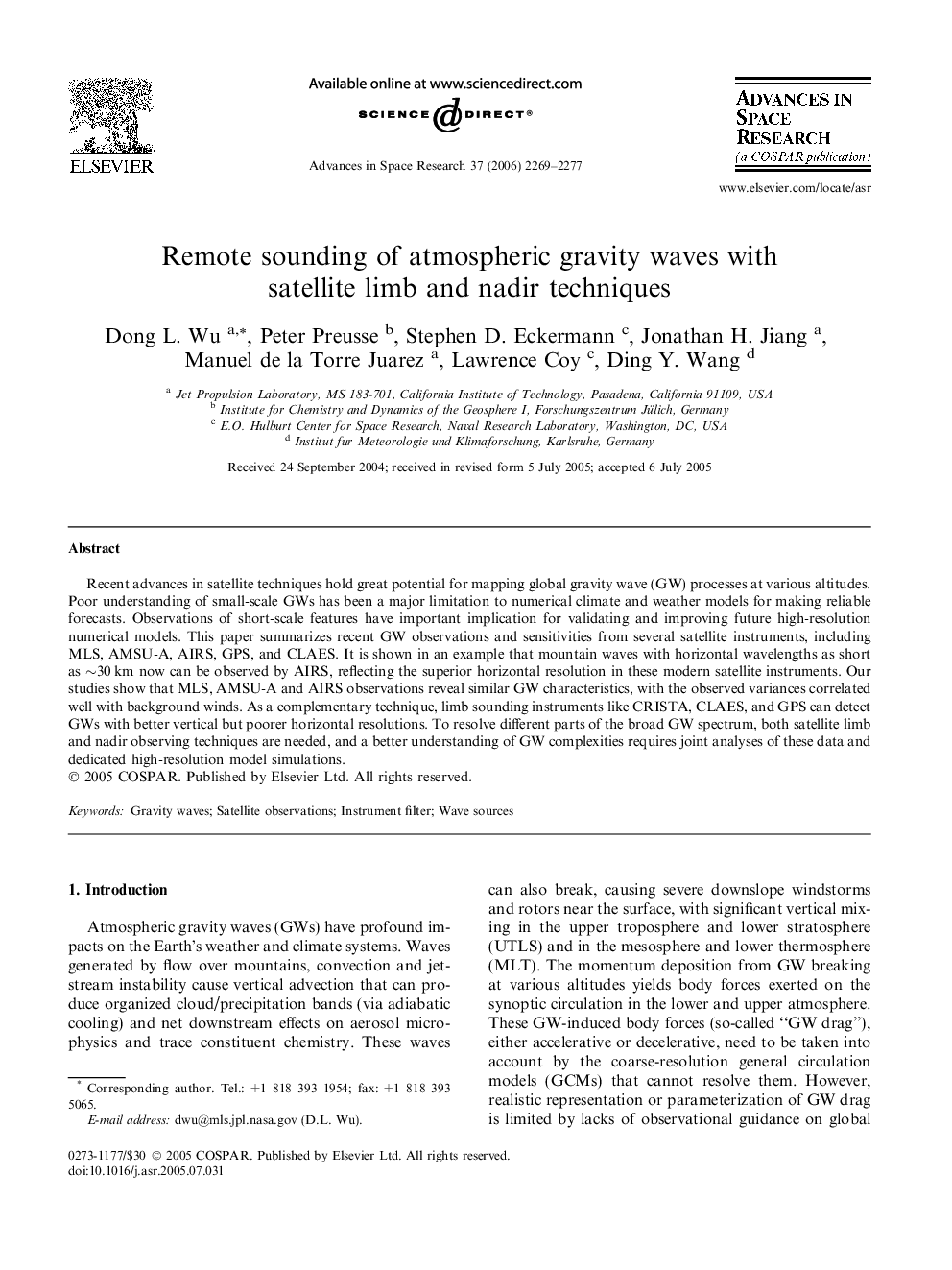| Article ID | Journal | Published Year | Pages | File Type |
|---|---|---|---|---|
| 1767335 | Advances in Space Research | 2006 | 9 Pages |
Abstract
Recent advances in satellite techniques hold great potential for mapping global gravity wave (GW) processes at various altitudes. Poor understanding of small-scale GWs has been a major limitation to numerical climate and weather models for making reliable forecasts. Observations of short-scale features have important implication for validating and improving future high-resolution numerical models. This paper summarizes recent GW observations and sensitivities from several satellite instruments, including MLS, AMSU-A, AIRS, GPS, and CLAES. It is shown in an example that mountain waves with horizontal wavelengths as short as â¼30Â km now can be observed by AIRS, reflecting the superior horizontal resolution in these modern satellite instruments. Our studies show that MLS, AMSU-A and AIRS observations reveal similar GW characteristics, with the observed variances correlated well with background winds. As a complementary technique, limb sounding instruments like CRISTA, CLAES, and GPS can detect GWs with better vertical but poorer horizontal resolutions. To resolve different parts of the broad GW spectrum, both satellite limb and nadir observing techniques are needed, and a better understanding of GW complexities requires joint analyses of these data and dedicated high-resolution model simulations.
Keywords
Related Topics
Physical Sciences and Engineering
Earth and Planetary Sciences
Space and Planetary Science
Authors
Dong L. Wu, Peter Preusse, Stephen D. Eckermann, Jonathan H. Jiang, Manuel de la Torre Juarez, Lawrence Coy, Ding Y. Wang,
